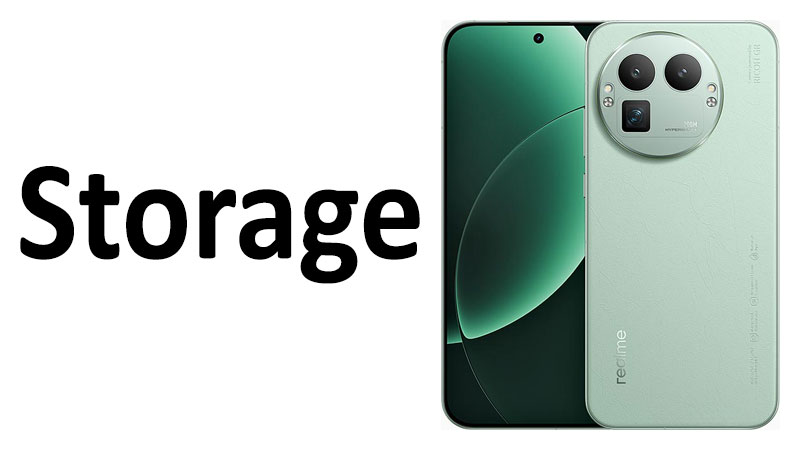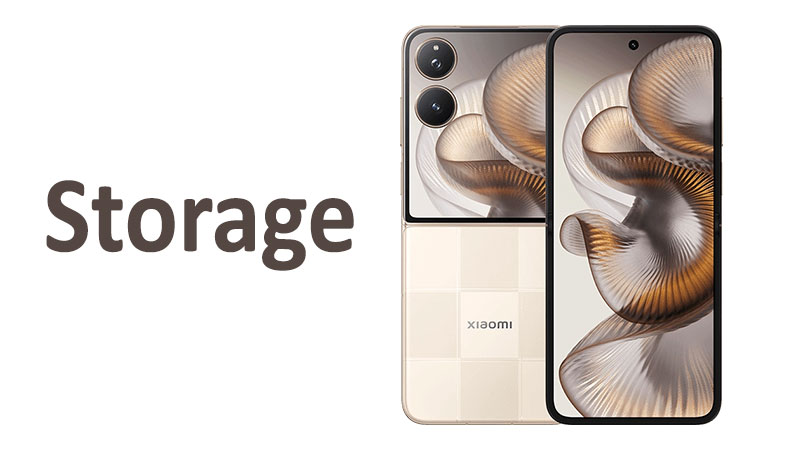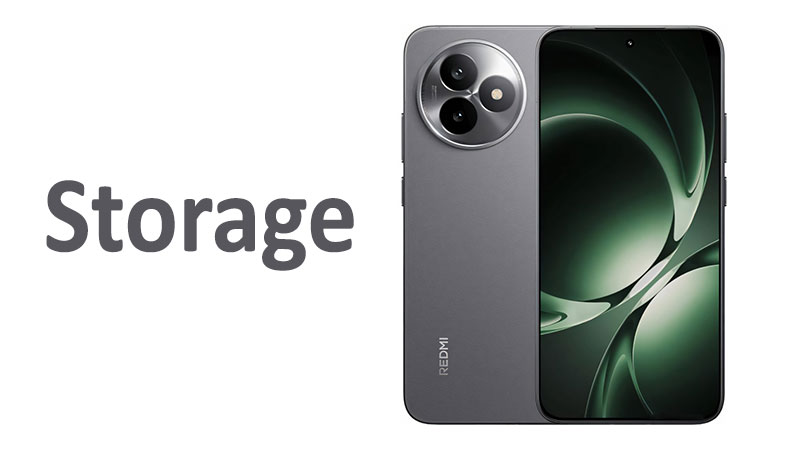The Realme GT 8 Pro storage is a fundamental element driving its flagship performance. High-speed data access and large capacity are crucial for today’s power users. The demand for instant app loading and massive file handling continues to grow. This premium smartphone addresses these needs with the latest UFS 4.1 technology. It offers expansive storage configurations up to 1TB. This detailed article serves as a complete buyer’s guide. We explore the technical specifications, compare them with rivals, and help you select the ideal Realme GT 8 Pro model. Understanding the storage architecture is essential for maximizing your device’s potential.
The Engine of Speed: In-Depth on UFS 4.1 Technology
The foundation of the Realme GT 8 Pro’s exceptional speed lies in its UFS 4.1 storage standard. UFS stands for Universal Flash Storage. It represents the pinnacle of flash memory design for mobile devices. The 4.1 iteration builds upon the already formidable UFS 4.0. It delivers minor but significant performance tweaks and greater power efficiency. This technology ensures the phone runs smoothly even under the heaviest workloads.
Maximum Data Throughput
UFS 4.1 maintains extremely high sequential read speeds. These speeds can reach up to 4,200 megabytes per second. Sequential write speeds are also incredibly fast. They often exceed 2,800 megabytes per second. This phenomenal throughput affects every interaction with the phone. Applications launch almost instantaneously. Large files transfer between internal folders in mere moments. This speed is non-negotiable for a professional-grade device.
The performance boost comes from advanced interface technology. The chip uses high-speed signaling across its data lanes. This architecture reduces data transfer latency significantly. Lower latency means the processor receives data faster. Consequently, the entire operating system feels more responsive. This is a key technical factor for the phone’s overall snappiness.
Real-World Performance Gains
The speed of UFS 4.1 directly translates into superior user experience. Consider launching a major mobile game. The loading screen duration is drastically cut down compared to older phones. This is a direct result of the high sequential read speeds. Furthermore, installing large game updates becomes much faster. The storage handles large, continuous data writes with remarkable speed.
The effect is also pronounced in professional workflows. Users who edit 4K or 8K video will notice this speed. They can scrub through high-resolution timelines without lag. Exporting the final video file completes in a fraction of the time. This is because the storage subsystem efficiently manages massive data blocks. Therefore, UFS 4.1 is not just fast on paper. It delivers tangible, time-saving benefits every day.
Efficiency and Longevity
UFS 4.1 is engineered for peak power efficiency. It consumes less power compared to older standards like UFS 3.1. It achieves higher speeds without drawing excessive current. This efficiency helps conserve the phone’s battery life. Data-intensive tasks do not cause rapid battery drain. This is crucial for power users who rely on their device all day.
Moreover, UFS 4.1 utilizes advanced health management features. These features include sophisticated wear leveling algorithms. Wear leveling distributes write operations evenly across the memory cells. This helps maximize the lifespan of the NAND flash memory. It ensures the Realme GT 8 Pro maintains its peak performance for several years. This attention to longevity is important for a flagship investment.
Storage Capacities: A Detailed Look at 256GB, 512GB, and 1TB
The Realme GT 8 Pro offers three generous internal storage options. They include 256GB, 512GB, and the massive 1TB. Choosing the right capacity is vital since internal storage is fixed. Users must anticipate their future needs when making this decision. The file sizes for games, apps, and media are constantly increasing.
256GB: The High-Speed Baseline
The 256GB model is the starting capacity for the Realme GT 8 Pro. It offers the full performance benefits of UFS 4.1. This option is ideal for users prioritizing speed and value. It is a substantial amount of space for most modern users.
This capacity suits users who primarily rely on cloud services. It is good if you frequently back up photos and videos to external storage. It offers sufficient space for all essential productivity apps. You can also comfortably install a selection of the latest large-format games. However, users must actively manage their downloaded media.
512GB: The Enthusiast’s Sweet Spot
The 512GB configuration hits the sweet spot for the majority of power users. It offers a perfect balance between capacity and cost. This option largely removes the need for constant file management. It provides significant digital freedom.
Users can install a comprehensive library of applications and games. They can also store thousands of high-resolution photos and music files. This capacity is the minimum recommended for anyone serious about mobile gaming. It is also suitable for those who record 4K video occasionally. The 512GB option ensures the phone remains functional and non-constricting for several years of heavy use.
1TB: Unrestricted Digital Archiving
The 1TB capacity is the maximum storage available in the Realme GT 8 Pro lineup. This option is aimed at digital archivists and professional content creators. It provides virtually unlimited local storage for mobile use. This level of space is a game changer for certain user groups.
Professional videographers benefit greatly from this capacity. They can record raw 8K or extended 4K footage directly to the phone. They do not worry about space constraints. Users who maintain large libraries of offline content, such as films or music, will also appreciate it. Choosing 1TB is the ultimate form of future-proofing. It is a long-term investment in device versatility.
RAM Configurations: Matching Memory with Storage Needs
The Realme GT 8 Pro provides a complex set of configurations. It pairs the three storage tiers with either 12GB or 16GB of RAM. RAM, or Random Access Memory, dictates the phone’s multitasking capability. It is the short-term memory that holds running applications and system data.
12GB vs. 16GB RAM for Multitasking
RAM capacity is critical for maintaining stability during heavy use. More RAM allows the operating system to keep more apps open simultaneously. This prevents apps from being forcefully closed in the background. It also eliminates frustrating reloads when switching between tasks.
- 12GB RAM: This is an excellent baseline for any flagship device. It handles all demanding mobile games easily. It is more than enough for most users who perform standard multitasking.
- 16GB RAM: The 16GB option is designed for the most intense power users. This extra memory buffer ensures perfect stability. It is ideal for split-screen apps, heavy browser use, and professional productivity tasks. Running two major games side-by-side or using demanding editing software requires this memory.
Analyzing the Five Available Combinations
Realme offers five unique configurations. Each one caters to a distinct user profile based on their needs for capacity and multitasking power.
- 256GB / 12GB RAM: Best for the budget-conscious user prioritizing speed. They rely heavily on the cloud for storage.
- 256GB / 16GB RAM: A unique choice for users needing maximum multitasking power. They require minimal internal capacity but absolute memory headroom.
- 512GB / 12GB RAM: A balanced, strong option. It is suitable for everyday power users who need good storage but are not extreme multitaskers.
- 512GB / 16GB RAM: The recommended all-rounder flagship package. It provides generous storage and maximum multitasking ability. It is the best choice for the majority of enthusiasts.
- 1TB / 16GB RAM: The definitive, uncompromising specification. It offers maximum storage capacity paired with maximum memory for professional workflows.
Prioritizing RAM for Stability
Users must decide if they value persistent app performance more than capacity. For instance, a video editor might prefer the 512GB/16GB RAM configuration. They need the RAM for rendering stability. A casual user who collects movies might prefer the 1TB/12GB RAM configuration. They need the space more than the extra RAM. Generally, the 16GB RAM is a strong recommendation for anyone seeking multi-year future-proofing. It provides a noticeable stability advantage.
Specialized Comparisons and Market Positioning
Evaluating the Realme GT 8 Pro storage requires comparison with both its sibling model and top competitors. This analysis highlights why the Pro model justifies its premium status.
GT 8 Pro vs. Realme GT 8 (UFS 4.1 vs UFS 4.0)
The main difference between the standard GT 8 and the GT 8 Pro lies in the storage technology. The standard GT 8 uses UFS 4.0. The Pro model elevates this with the slightly newer UFS 4.1 standard.
- The Speed Increment: UFS 4.1 offers minor speed and efficiency refinements over UFS 4.0. It delivers better sustained performance under very high load. This makes the Pro model marginally faster in extreme, prolonged tasks.
- Thermal Management: The UFS 4.1 chip is often integrated with a more sophisticated thermal solution in Pro models. This is designed to prevent performance throttling during extended 3D gaming or rendering sessions. The Pro model offers a more reliable, consistent speed profile.
- Capacity Overlap: Both devices offer up to 1TB of storage. However, the Pro model’s architecture ensures that 1TB can be accessed with slightly better efficiency and power management.
GT 8 Pro vs. Flagship Competitors
The Realme GT 8 Pro competes with other top-tier devices like the Samsung Galaxy Ultra and high-end Xiaomi models. These competitors also use UFS 4.0 or UFS 4.1.
- Storage Parity: All leading flagships offer comparable raw UFS 4.x speed. The GT 8 Pro remains competitive on the speed front. Its advantage lies in the configuration flexibility and pricing strategy.
- Configuration Flexibility: The GT 8 Pro’s option of 256GB/16GB RAM is unique. It caters to a specific, speed-focused user who values memory over capacity. The inclusion of 1TB capacity also places it among the highest-spec devices available.
- Price-to-Performance: Realme often delivers these top-tier specifications at a more accessible price point. This makes the GT 8 Pro a strong value proposition for users demanding UFS 4.1 and 16GB RAM.
The Advantage of UFS 4.1 in Pro Devices
The UFS 4.1 technology in the Realme GT 8 Pro is a statement of intent. It signifies a focus on professional-grade reliability. This slight upgrade over UFS 4.0 primarily benefits heavy users. They push the phone’s limits constantly. The improved thermal profile and efficiency ensure that the storage never becomes the weakest link. This consistency is crucial for competitive gaming and mission-critical applications.
Pros, Cons, and Key Buyer Takeaways
Every smartphone’s storage system has strengths and weaknesses. Prospective buyers must weigh these factors carefully before making a purchase decision.
Core Advantages of the GT 8 Pro Storage
- Cutting-Edge Speed: UFS 4.1 delivers market-leading data transfer rates. This ensures the fastest possible experience for app launching and file handling.
- Unmatched Capacity: The availability of a massive 1TB option eliminates storage concerns. It is perfect for professional and archival use.
- High RAM Ceiling: The option for 16GB of RAM ensures superior multitasking stability. This memory capacity is future-proof and excellent for demanding apps.
- Power Efficiency: UFS 4.1 consumes less power during intensive transfers. This helps maximize battery life throughout heavy usage periods.
- Longevity: Advanced wear-leveling features extend the usable life of the flash memory. This ensures the device maintains its peak speed for many years.
Important Trade-Offs and Disadvantages
- No MicroSD Expansion: This is a crucial constraint. The Realme GT 8 Pro does not support expandable storage. The initial capacity chosen is final.
- Premium Cost: The 512GB and 1TB configurations, especially when paired with 16GB RAM, command a significant price premium. Users must be prepared for this flagship cost.
- Fixed Storage Limitations: Users must rely on cloud services or external drives for additional space. They cannot simply insert a cheap memory card for expansion.
Essential Points for Prospective Buyers
- Choose Capacity Wisely: Since storage is non-upgradeable, always overestimate your storage needs by about 20%. Consider future app size growth and your media collection habits.
- RAM for Workflow: Select 16GB RAM if you run multiple, simultaneous demanding apps. Choose 12GB RAM if you primarily focus on one major task at a time.
- Speed Consistency: The UFS 4.1 ensures that even the 256GB base model delivers flagship-level speed. You only compromise on capacity, not performance.
The Definitive Buyer’s Guide: Choosing Your GT 8 Pro
Selecting the right Realme GT 8 Pro model requires a personalized assessment of your needs. You must balance budget constraints with long-term performance goals. Consider the phone’s usage over the next three years.
Assessing Your Usage Profile
- The Minimalist Cloud User: Select the 256GB/12GB RAM option. This is the most cost-effective way to access the UFS 4.1 speed. You primarily stream content and manage media via the cloud.
- The Balanced Power User: The 512GB/16GB RAM model is the best all-around choice. It offers ample storage for files and games. The 16GB RAM ensures that multitasking is flawless and stable.
- The Professional Content Creator: Opt for the 1TB/16GB RAM configuration. This is necessary for storing raw footage and handling complex multi-layered edits. It is the only choice for unrestricted mobile production.
- The Multitasking Enthusiast: Choose the 256GB/16GB RAM configuration. This is perfect if you only need a few apps locally but require massive memory. This avoids the cost of unused internal storage capacity.
Budget vs. Future-Proofing
The difference in cost between the 256GB and 1TB versions is substantial. View the cost of higher storage as an investment in future longevity. The 1TB model will remain highly relevant long after the 256GB model begins to feel restrictive. If you plan to upgrade every year, the 256GB option is fine. If you keep your phones for three years or more, the 512GB or 1TB is a wiser economic decision. They help protect the device’s resale value.
Importance of Fixed Storage
Remember the golden rule of fixed storage. You cannot install additional internal memory later. Therefore, if you are torn between two capacities, always choose the larger one. The small upfront cost of the upgrade is far less expensive than replacing the entire phone later due to insufficient space. The UFS 4.1 speed is constant. The capacity is the only variable that defines your long-term experience.
Conclusion: Making the Informed Choice
The Realme GT 8 Pro storage system is a masterclass in modern mobile hardware. It features the incredibly fast UFS 4.1 technology. This ensures ultra-low latency and peak sustained performance. The phone offers flexible capacity options. These range from the speedy 256GB to the colossal 1TB archive. It also includes powerful 12GB and 16GB RAM configurations.
The choice between the five available configurations is highly personal. Gamers will value the 16GB RAM paired with 512GB storage. Creators should strongly consider the 1TB capacity option. The GT 8 Pro’s reliance on fixed internal storage means buyers must select carefully. There is no possibility for later memory expansion.
Ultimately, the Realme GT 8 Pro is expertly engineered for users who demand the best. The high-speed UFS 4.1 makes every interaction instantaneous. The expansive capacity ensures digital freedom. Selecting the right model ensures you maximize the performance and longevity of this top-tier flagship device. The Realme GT 8 Pro stands ready to handle the data demands of tomorrow.
Frequently Asked Questions (FAQ)
What type of internal storage does the Realme GT 8 Pro use?
The Realme GT 8 Pro uses the latest high-speed UFS 4.1 internal flash storage technology.
Does the GT 8 Pro allow for MicroSD card expansion?
No. The Realme GT 8 Pro does not include a slot for a MicroSD card. Its storage capacity is fixed upon purchase.
What is the primary benefit of UFS 4.1 over UFS 4.0?
UFS 4.1 offers slight refinements in speed, power consumption, and thermal stability over UFS 4.0. This benefits sustained, heavy performance.
Is 16GB of RAM necessary for the Realme GT 8 Pro?
16GB RAM is not necessary for most casual tasks. However, it is essential for professional users. It guarantees superior stability during intense multitasking and editing.
Which configuration offers the best overall value?
The 512GB / 16GB RAM configuration offers the best balance. It combines generous storage capacity with maximum memory for excellent, future-proof performance.



